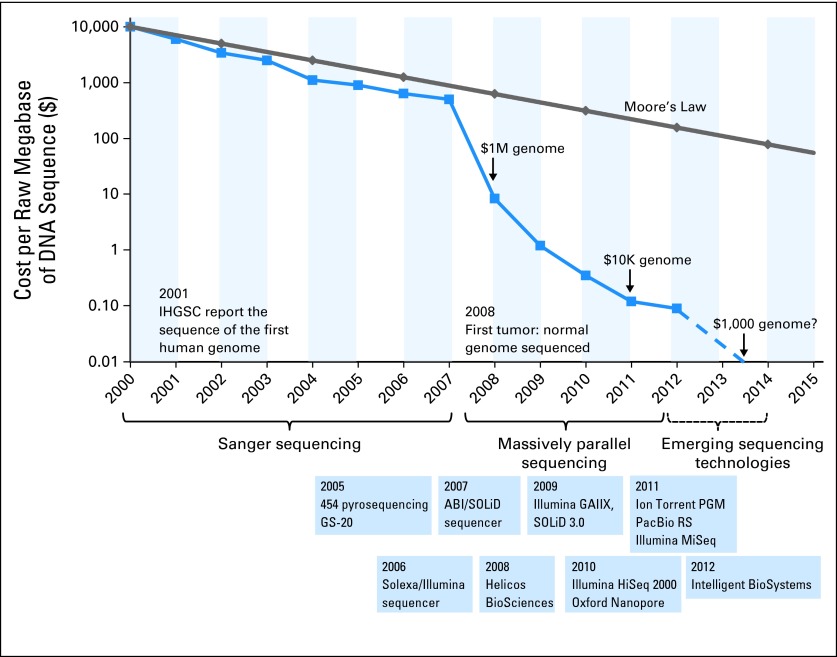Fig 2.
The decrease in cost of genome sequencing facilitated by massively parallel sequencing technologies. The cost of sequencing has decreased at a rate faster than Moore's law in the past 10 years. The data from 2001 through 2007 represent the costs of generating DNA sequences by using Sanger-based chemistries and capillary-based instruments (first-generation sequencing platforms). Starting in 2008, the data represent the costs of generating DNA sequences by using second-generation sequencing technologies. The change in instruments represents the rapid evolution of DNA sequencing technologies that has occurred in recent years. Landmark events are also indicated on the timeline. The release of various second- and third-generation technologies is indicated in blue boxes. IHGSC, International Human Genome Sequencing Consortium. Data adapted from the National Human Genome Research Institute Web site.35

